Ann Arbor, Michigan
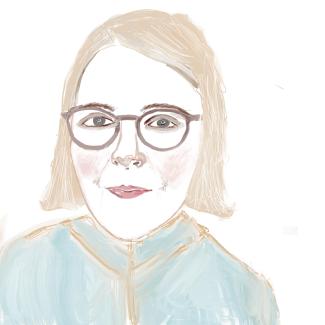
Hi, I’m Tracey, and I live in Ann Arbor, Michigan.
I expected this ‘week of plastics’ journaling to be depressing, and dispiriting. It was depressing, and sad, but what was so surprising was that I could see the seeds of change, and possibility, everywhere. Although when you talk about plastics with people, most seem to feel either vaguely or really uncomfortable with the tradeoffs we are making for our super disposable, convenient lifestyle - it can be hard to imagine an alternative, and often it seems like too much trouble. Most people - busy, overwhelmed, stressed out, don’t have the luxury of arranging life to avoid disposable plastics. Plastics are so ubiquitous, and the habits are so ingrained that it's hard to remember that all of this is shockingly recent - in my lifetime.
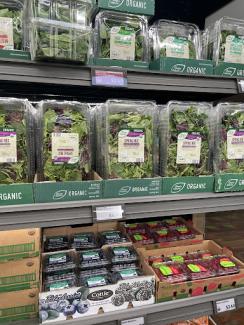
Day 1: I like to buy organic food when I can, because I don’t want to eat pesticides, or expose workers to them, or drink them in the groundwater when they run off farms - but it can be more expensive. Costco is an option, but the quantities are large so I often waste more food that way. (Note: reducing food waste is one of the most important ways to reduce your carbon footprint, so doing that should be number one on your list!). Aldi’s can be a good alternative because the prices for organics are lower and the portions smaller - but so much of the fresh produce is in shrink-wrapped plastic and plastic clamshells. It's discouraging. The clear clamshells are typically made of PET plastic, which I used to think was better than other plastics, but I just watched an amazing and disturbing webinar about PET plastic, and heard from John Beard Jr., the Executive Director of the Port Arthur Community Action Network who lives near production facilities that make ingredients for PET bottles. (He’s an amazing guy, more about him here).
The community is exposed to the toxic chemicals from production (that’s him on the right). He was one of the NGO delegates to the International Plastics Treaty who told the story of the health and environmental impacts of all of this plastic production we see every moment of our lives. PET production is a major polluter of communities in the Gulf region - among other things, PET is the largest source of ethylene oxide, a chemical that is responsible for 90% of communities that exceed air toxic limits set by the government. I didn’t know all of this before I went to the grocery store on this particular trip. PET manufacturers need to stop polluting communities that host production facilities and we have to move away from PET where we can. Of course, once it's summer and the harvest is in, I can get fresh local produce without much plastic at a farmers market up the street, but during the Michigan winters, that isn’t an option. But you can imagine something different - you just have to go to most grocery stores to see produce that isn’t crammed in plastic tins.
Day 2: Neck Banding
As part of this plastics journaling, I learned that most “neck banding” like what is on my glass sesame oil bottle (for my bibimbap) is made of PVC plastic, which was super depressing. I have been working for most of my career to reduce the use of this plastic, because it's so bad, and contaminates the communities where it is made. We did a feature on it for the Ecology Center after the East Palestine train derailment, which was carrying the super toxic ingredients that make PVC plastic, and why the disaster was so serious and there were legitimate concerns about the safety of residents. You can read more about that whole debacle here. For the most part, consumers don’t have a choice about neck banding, but not all brands use it.
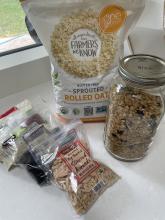
I often make homemade granola for breakfasts. It’s cost-effective and it is nice to serve from a glass jar - but it’s deceiving, because every single ingredient comes out of a plastic bag. And I often eat it with yogurt from a plastic tub. I don’t always have the time to make homemade yogurt, but that involves much less plastic. I can buy all of the ingredients in bulk and remember to bring reusable bags to the bulk store, but I rarely do that.
We go through a lot of lemons and limes in my household, and if you buy more than one at a time, which is more cost effective, they are often packaged in these net plastic bags. They are usually nylon or polypropylene - the ones that hold seafood can be boiled I learned - which makes me wonder what is in that water afterward! I don’t think they are recyclable, I always imagine they would be good for something (when I was a kid I used to save them to make little colorful bags for hauling stuff). Now I always look at them and think about what can be done with them before throwing them out - but it all seems like a waste. A former colleague, Lauren Olson, makes clothes from reused textiles - her business is called Remark Clothing and the pieces are great!
This is the top of my recycling bin at home - we are able to recycle lots of things in Ann Arbor, and we don’t need to separate them. But many people miss some of the nuances - like washing your recyclables before putting them in the bin, or the fact that you shouldn’t put lids in the bin, or that you can’t recycle #3 (PVC) plastic. But beyond that, there are lots of mystery plastics that can end up in my house that are just hard to figure out - like the plastics underneath my peaches - is that thing recyclable?
Beyond the mysterious plastics, there is just a lot of plastic that comes through the house that just isn’t recyclable - I try to avoid them but sometimes they get added to orders or are included in prepared food. These small plastic pouches for sauces are one example.
Another example is the plastic rings that hold six packs together.
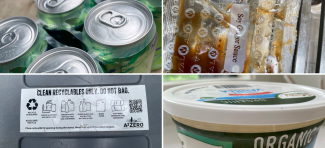
As I was journaling for my week of plastics, Ann Arbor had unhealthy air from the fires in Canada, which continue to burn, and started earlier and in larger areas than ever before - another direct outcome of climate change. For the first time I can remember, I had to stay inside during the summer because of fire smoke. I know this is the daily reality for some people in fire-prone regions of the country, and the daily reality for a huge part of the world that lives with unhealthy air much of the year. Still, it was unsettling because we live in the Great Lakes, surrounded by water, and in a usually humid climate in the summer. I started researching air purifiers and thinking about how to process living with this new reality.
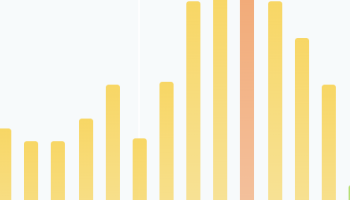
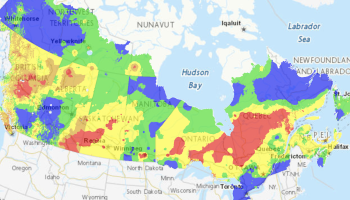
Plastic production, consumption and disposal is helping to fuel the climate crisis, undermining climate and health goals. In 2015, 4 percent of fossil fuel was used to make plastic and, by 2050, this is predicted to increase to 20 per cent. The global carbon footprint of plastic has doubled since 1995 and currently accounts for 4.5 per cent of global greenhouse gas emissions. Most plastics are fossil fuels.
A few weeks later, these charts started to circulate on social media and, less so, in the news. Climate scientists were freaking out about ‘off the charts’ surface ocean temperatures. I don’t really know what we are doing as a culture - it feels very disconcerting to just continue everything as usual. Sometimes I want to scream. Occasionally I have to calm a rising panic about the whole situation.
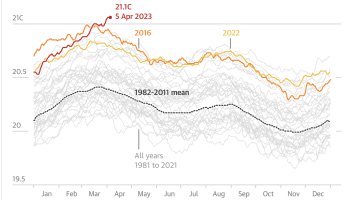
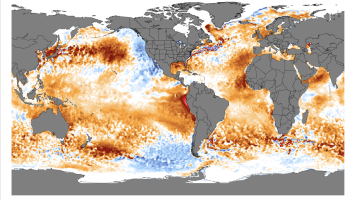
Plastics also require an enormous volume of hazardous chemicals. More than 13,000 chemicals are associated with plastics and plastic production including monomers, stabilizers, plasticizers, processing agents, flame retardants, etc, and at least 3,200 of them have one or more hazardous properties of concern. These chemicals are responsible for many of the harms to human and planetary health attributed to plastic. Chemicals of concern can be released along the entire life cycle. These chemicals leach from products into the environment, exposing people and the food chain. This is the work I’ve spent most of my career on … and yet, here I am, still wrestling with plastics every day, and wondering how to make broad societal changes, and simple personal changes.
Yet still, during this week of plastics, I kept glimpsing signs of hope. So many communities, cities, states and countries are starting to restrict single use plastics including bags, single use food service ware, and packaging. For example, single-use plastic plates, cutlery, cups, food and beverage containers and straws cannot be placed on the market in the European Union. The same measure applies to expanded polystyrene, and products made of oxo-degradable plastic. In Scotland, there is a nationwide ban on certain single-use plastics. To prevent plastic pollution, the Government of Canada now restricts the manufacture, import, and sale of six categories of single-use plastics that threaten the environment. Many countries have rules requiring Extended Producer Responsibility for Packaging. Companies representing 20% of all plastic packaging produced globally have committed to ambitious 2025 targets for packaging reduction. Plastic bags have already been banned in two U.S. states and hundreds of towns and cities. This is a short summary of a very long list.
It wasn’t that long ago that we lived very differently. I’m old enough to remember a time when plastic products were much more rare. It seems possible, then, to imagine a different world again. With a critical mass of informed citizens, and strong political pressure, we can live in a world that is safer, healthier and more resilient, and that feels much better.


